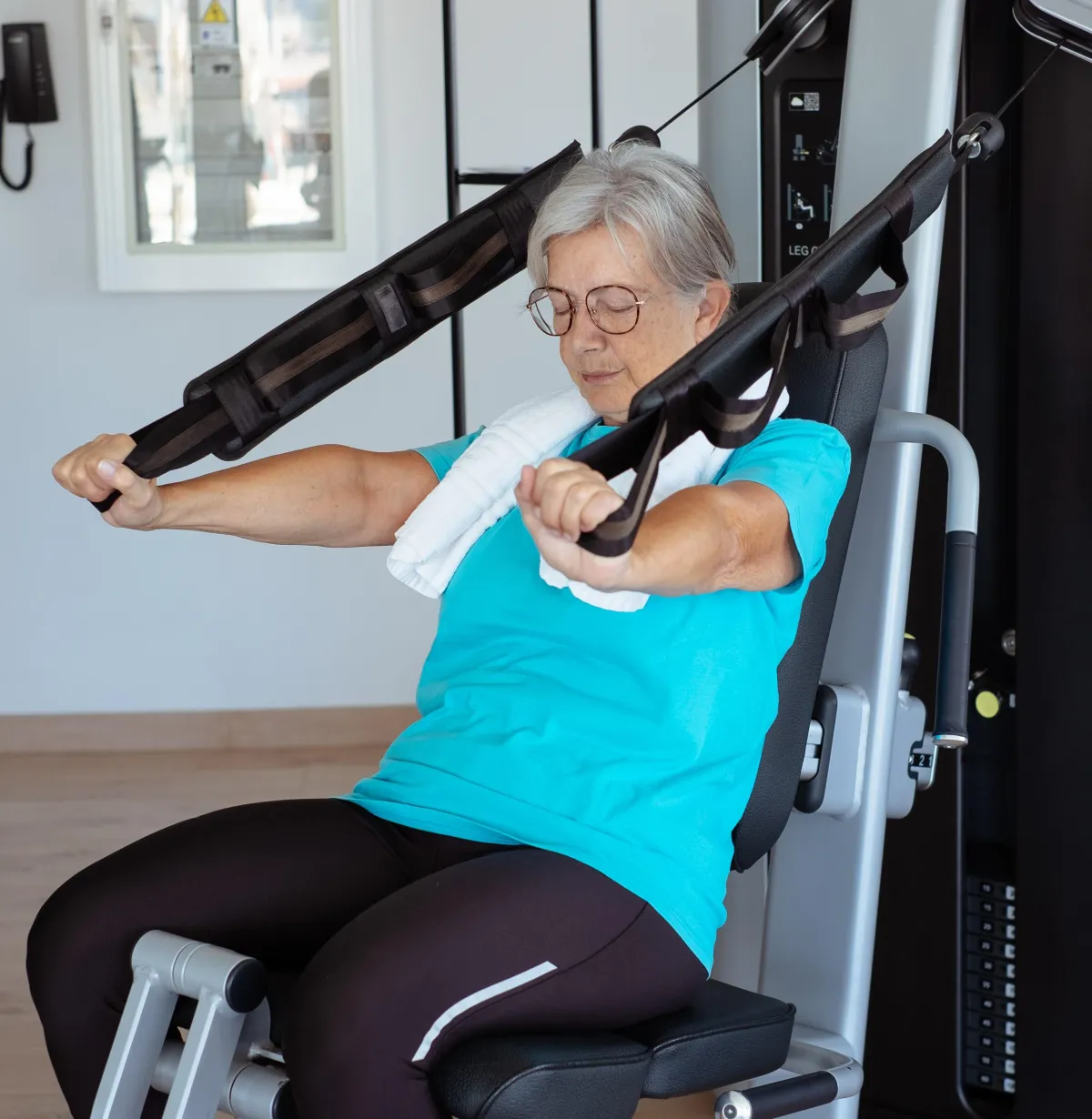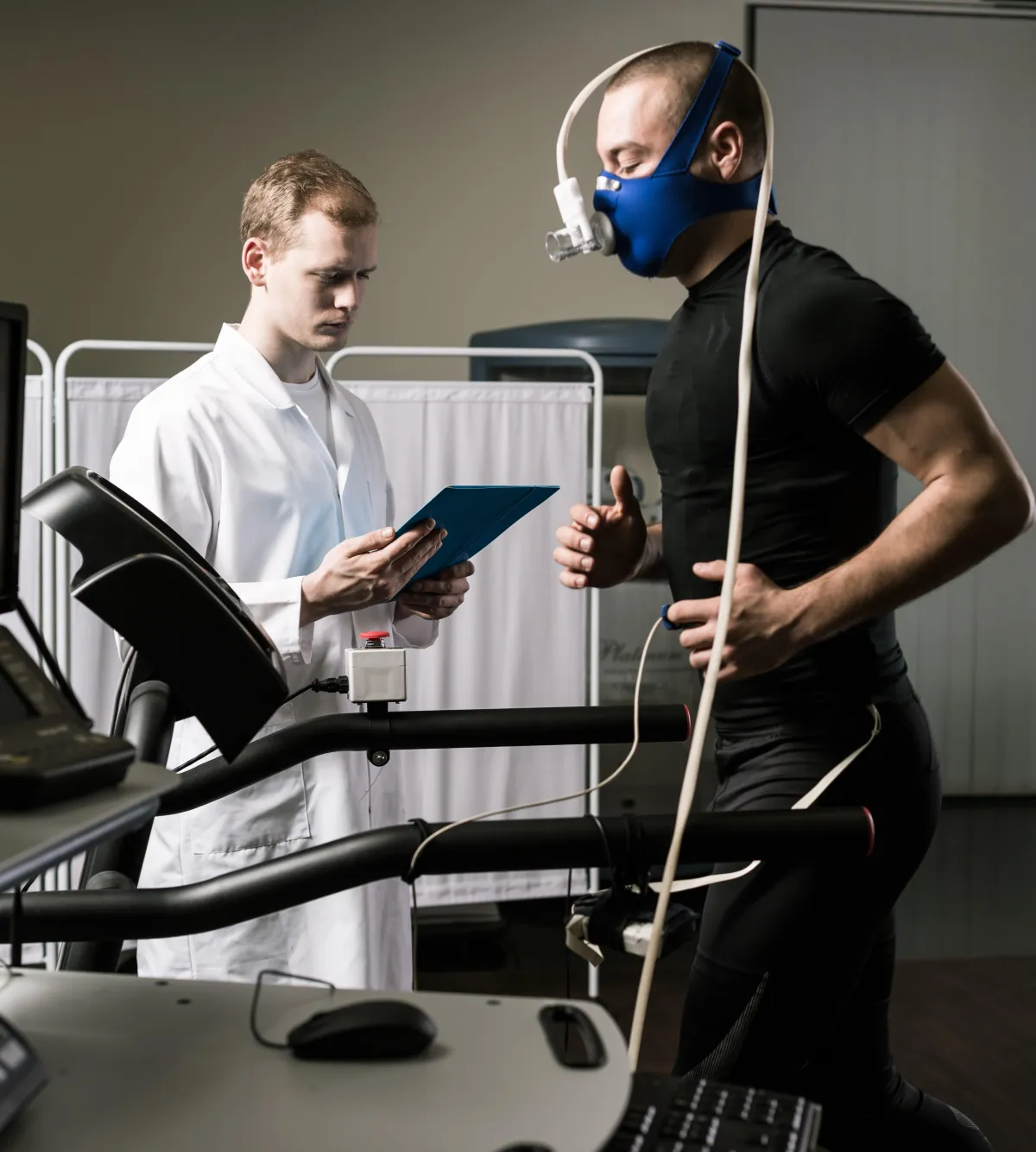Where Your Strongest Years Begin After 50 – Serving Mill Valley Since 2001
ULTIMATE FITNESS
MILL VALLEY: Specialized Strength Training for Adults 50+
For adults over 50 looking to regain strength and energy, Ultimate Fitness Mill Valley offers a proven solution that has helped over 500 Mill Valley residents discover their strongest years are just beginning. This specialized fitness program addresses the unique needs of mature adults through safe, effective training methods designed specifically for the 50+ demographic.
Key Results for Members 50+:
Average member gains 4+ pounds of muscle
Featured in Marin Independent Journal
43% of members hadn't exercised regularly in years when they started
You ‘re In Good Hands
Randy Green
Owner
At Ultimate Fitness our primary goal is to guide you to reach your health and wellness goals, such as increased strength, functional fitness, injury rehabilitation, boosting energy, weight loss, stress management, and so much more. We are committed to creating a space for you to explore your health, facilitating behavior and lifestyle changes that you can sustain for the long term. We are a dictated team of personal trainers with over 50 years of experience. Our trainers have degrees in Kinesiology & Exercise Science and other disciplines. We are certified personal trainers with experience in strength and conditioning, nutrition, functional fitness, senior fitness, physical therapy and rehabilitation. We will work with you to help you discover how to strengthen your body, live a healthy lifestyle, and become the healthiest, happiest version of yourself by finding exactly what works for you.
Why Adults 50+ Choose Specialized Fitness Programs
Traditional gyms often fail adults over 50 because they don't address age-specific challenges like joint health, muscle preservation, and safe progression protocols. Research shows that adults 50+ require different training approaches to build strength safely while avoiding injury.
Common fitness challenges for adults 50+:
Decreased muscle mass (sarcopenia)
Joint stiffness and mobility issues
Longer recovery times
Intimidation in traditional gym environments
Previous injuries or physical limitations

The Science Behind 30-Minute Training for Seniors
How does 30 minutes twice weekly work for adults 50+?

The Ultimate Fitness Mill Valley method activates more muscle in 30 minutes than traditional workouts do in 90 minutes. This high-efficiency approach triggers muscle protein synthesis while allowing adequate recovery time – crucial for adults over 50 who need longer recovery periods between intense training sessions.
Benefits of shorter, more frequent sessions for mature adults:
Reduces cortisol buildup that can impair recovery
Maintains consistency without overwhelming busy schedules
Allows for proper joint warm-up and cool-down
Continues burning calories for up to 72 hours post-workout
Minimizes injury risk through focused, supervised movements
Real Results: Mill Valley Residents Share Their Transformations

John S., 62 – Mill Valley Resident Since 1985
"I feel stronger now than I did at 40"
John's transformation demonstrates how adults in their 60s can build significant strength through proper programming. After three months of training, he gained more strength than years at traditional gyms while keeping up with grandchildren more easily.
John's Results:
Lost 8 pounds of fat
Gained 4 pounds of lean muscle
Improved functional strength for daily activities
Increased energy levels throughout the day

Patricia L., 57 – Local Business Owner
"Finally found something I can stick with"
For busy adults over 50, consistency is key to long-term success. Patricia's story illustrates how time-efficient training can fit into demanding schedules while delivering lasting results.
Patricia's Results:
Lost 15 pounds and maintained weight loss for 6+ months
Dramatically improved energy levels
Established sustainable exercise habits
Reduced work-related stress through regular movement

David K., 70 – Semi-Retired Consultant
"Stronger at 70 than I was at 60"
David's transformation showcases the potential for strength gains well into the 70s when using science-based training methods designed for mature adults.
David's Results:
Gained 5+ pounds of muscle mass
Improved bone density measurements
Enhanced balance and coordination
Doctor-verified health improvements
Comprehensive Approach to Fitness After 50
Personalized Training Programs for Adults 50+
What makes training different for adults over 50?
Every training session is customized based on individual health history, current fitness level, and specific goals. This personalized approach ensures safe progression while maximizing results for mature adults.
Custom program elements include:
30-minute sessions twice weekly (optimal frequency for 50+ adults)
Joint-strengthening movements that improve mobility
Progressive overload protocols safe for mature adults
Modifications for arthritis, osteoporosis, or previous injuries
Real-time adjustments based on daily energy levels

Start Your Transformation:
Free Assessment Available
LIMITED AVAILABILITY
Only 8 New Members Accepted This Month
Take advantage of the complete assessment and training session (normally $200) available free this month. This limited availability ensures every member receives the personal attention that makes this specialized approach so effective for adults 50+.
Three ways to secure your spot:
Call/text: (415) 380-8033
100% Satisfaction Guarantee: If after your first month, you don't feel stronger, more energetic, and more confident in your physical abilities, receive a complete refund of your membership fee.
Meet Your Expert Team: Specialists in 50+ Fitness
Joe
Joe - Exercise Physiologist & Senior Fitness Specialist
32 years of experience helping adults stay strong and active
Joe combines his background as an Exercise Physiologist and Physical Therapist Assistant with specialized training in senior fitness. His approach focuses on preventing problems before they start, helping healthy adults 50+ maintain their active lifestyles.
Joe's credentials:
Licensed Physical Therapist Assistant
NASM Certified Personal Trainer
Senior Fitness Specialist Certification
Degree in Kinesiology, Cal State Hayward
Former collegiate athlete (football & water polo)
What Joe's clients say:
"My clients at Ultimate Fitness prioritize their health, and I love helping them maintain their active lifestyles without the aches and pains that usually come with aging."
Victoria
Strength & Conditioning Specialist
Helping active adults maintain their adventurous lifestyle
Victoria brings over 10 years of training experience with deep understanding of functional strength needed for an active lifestyle after 50. Her background in athletics and outdoor adventures makes her perfect for clients who refuse to slow down.
Victoria's expertise:
ISSA Certified Personal Trainer (2014)
Certified Scuba Instructor
Former collegiate athlete
Specialized in functional fitness for active lifestyles
What Victoria's clients say:
"She keeps me strong enough to do everything I love—from weekend hikes to diving trips with my grandkids." - Client testimonial
Nina
Nutrition & Movement Expert
25+ years helping clients reach their goals with joy and confidence
Nina's comprehensive approach combines personalized training, Pilates-based movement, and nutrition coaching. Her "Progress Over Perfection" philosophy helps even the most fitness-hesitant clients discover their potential.
Nina's qualifications:
NASM Certified Personal Trainer
Certified Pilates Trainer (Carol Appel Method)
NASM Certified Nutrition Coach
Weight Loss Management Specialist
25+ years in fitness industry
What Nina's clients say:
"She makes every session fun and never makes me feel bad about where I'm starting from. Her motto 'I Can I Will' has become mine too!"
OUR COMPLETE APPROACH FOR ADULTS 50+

Advanced Body Analysis Technology
How do you track progress for adults 50+?
Sophisticated body composition analysis goes beyond basic weight measurements to show exactly how training affects muscle mass, bone density, and metabolic health – crucial metrics for adults over 50.
Comprehensive tracking includes:
3D body composition scanning (normally $25)
Detailed metabolic assessment
Muscle mass and bone density monitoring
Personalized heart rate zones for safe training
Progress photos documenting physical changes
Nutrition Support for Adults 50+
What nutrition strategies work best for adults over 50?
Nutritional needs change significantly after 50, requiring specific strategies to support muscle building, reduce inflammation, and maintain energy levels throughout the day.
Age-specific nutrition guidance:
Anti-inflammatory foods that reduce joint pain
Protein timing for optimal muscle protein synthesis
Meal planning that accommodates slower metabolism
Energy-boosting strategies for sustained vitality
Supplements that support bone health and recovery


Addressing Common Concerns About Starting Fitness After 50
Is it safe to start exercising after 50 if you've been sedentary?
87% of Ultimate Fitness Mill Valley members felt exactly the same way before starting. The program specifically accommodates beginners who haven't exercised in years, with graduated progressions that start at any fitness level.
"I'm too out of shape to start exercising"
Beginner-friendly features:
Initial assessment identifies safe starting points
Movements progress gradually from basic to advanced
Constant supervision ensures proper form
Modifications available for any physical limitation
Training Options for Different Needs

Private Training for Adults 50+
Who benefits most from one-on-one training?
Private sessions offer completely customized programs for adults with specific medical conditions, significant physical limitations, or those who prefer individual attention during their fitness journey.
Private training advantages:
Maximum personalization for medical conditions
Faster results through focused attention
Flexible scheduling for busy professionals
Complete privacy for those feeling self-conscious
Specialized protocols for specific health goalsHere's some stuff
Frequently Asked Questions About Fitness
After 50
How often should adults over 50 exercise?
Research shows that twice-weekly strength training sessions are optimal for adults 50+, allowing adequate recovery while maintaining consistency for long-term results.
What's the best type of exercise for adults over 50?
Resistance training that builds muscle mass and bone density while improving functional movement patterns for daily activities.
How long does it take to see results from exercise after 50?
Most adults 50+ notice increased energy within 2 weeks, strength improvements within 4-6 weeks, and significant body composition changes within 8-12 weeks.
Is it too late to start building muscle after 50?
Adults can build significant muscle mass well into their 70s and beyond with proper training protocols designed for mature adults.
Follow Us on Instagram
START YOUR TRANSFORMATION TODAY
Your strongest, most confident years don't have to be behind you.
CALL NOW: (415) 380-8033
Post Address and Mail
Email: [email protected]
Address
Studio: 457 Miller Avenue, Mill Valley, CA 94941
Get In Touch
Assistance Hours
Mon – Fri 7:00am – 7:00pm
Saturday: 8:00am - 3:00pm
Sunday – CLOSED
Phone Number:
(415) 380-8033
Studio: 457 Miller Avenue, Mill Valley, CA 94941
Site: www.ultimatefit.net


